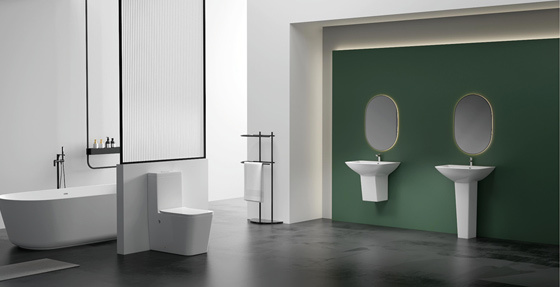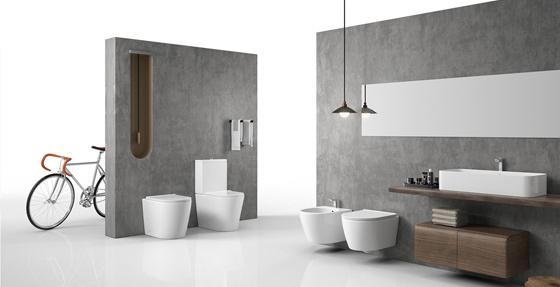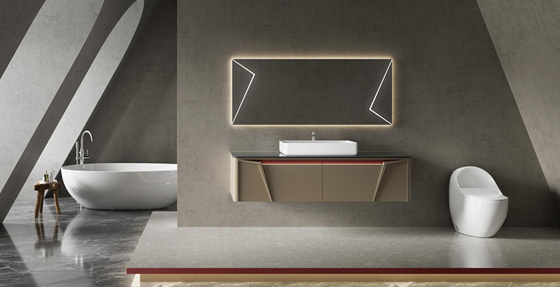Step-by-Step Installation Guide for a Concealed Cistern: Transform Your Bathroom with Ease
Release time:
2025-08-14
Step-by-Step Installation Guide for a Concealed Cistern Table of Contents 1. Introduction to Concealed Cisterns 2. Benefits of Installing a Concealed Cistern 3. Tools Required for Installation 4. Pre-Installation Steps 5. Installation Process: Step-by-Step 5.1 Choosing the Right Location 5.2 Mounting the Cistern 5.3 Connecting the W

Step-by-Step Installation Guide for a Concealed Cistern
Table of Contents
- 1. Introduction to Concealed Cisterns
- 2. Benefits of Installing a Concealed Cistern
- 3. Tools Required for Installation
- 4. Pre-Installation Steps
- 5. Installation Process: Step-by-Step
- 5.1 Choosing the Right Location
- 5.2 Mounting the Cistern
- 5.3 Connecting the Water Supply
- 5.4 Installing the Toilet Bowl
- 5.5 Testing for Functionality
- 6. Common Issues and Troubleshooting
- 7. Maintenance Tips for Your Concealed Cistern
- 8. Conclusion
- 9. FAQs
1. Introduction to Concealed Cisterns
A concealed cistern is an innovative plumbing solution designed to save space while providing a cleaner and more modern bathroom aesthetic. By hiding the cistern behind the wall, it eliminates the bulkiness of traditional toilet tanks, allowing for a sleeker appearance and more design flexibility. This installation guide aims to help you seamlessly integrate a concealed cistern into your bathroom, enhancing both functionality and style.
2. Benefits of Installing a Concealed Cistern
The advantages of installing a concealed cistern extend beyond aesthetics. Here are some compelling reasons to consider this option for your bathroom:
Space-Saving Design
Concealed cisterns free up valuable space, making your bathroom appear larger and more open. This is especially beneficial in smaller restrooms where maximizing space is crucial.
Enhanced Aesthetics
With the cistern hidden behind the wall, your bathroom gains a clean, minimalist look. This design choice complements modern and contemporary styles beautifully.
Reduced Noise
The installation of a concealed cistern can significantly reduce operational noise. The wall absorbs sounds associated with flushing, offering a quieter, more tranquil bathroom experience.
Easy Maintenance
Maintaining a concealed cistern is often easier than conventional systems, as access panels can be strategically placed for quick servicing without major disruptions.
3. Tools Required for Installation
To ensure a smooth installation process, you'll need the following tools and materials:
- Drill and drill bits
- Level
- Screwdriver (flat and Phillips)
- Pipe wrench
- Adjustable spanner
- Measuring tape
- Silicone sealant
- PVC pipes and fittings (if required)
- Concealed cistern kit
- Flush plate
4. Pre-Installation Steps
Before diving into the installation, follow these preparatory steps to ensure everything goes smoothly:
Assess Your Bathroom Layout
Evaluate the layout of your bathroom. Determine the best location for the concealed cistern, keeping in mind proximity to plumbing and accessibility for future maintenance.
Gather Necessary Materials
Ensure you have all tools and materials at hand. Double-check the specifications of your concealed cistern kit to confirm compatibility with your toilet design.
Turn Off Water Supply
Prior to beginning any plumbing work, turn off the water supply to avoid leaks and water damage during installation.
5. Installation Process: Step-by-Step
Follow this comprehensive installation process to successfully set up your concealed cistern.
5.1 Choosing the Right Location
The first step is selecting an appropriate location for the concealed cistern. It should be positioned close to the toilet, preferably on an interior wall to minimize the distance for water supply lines. Ensure the location allows for easy access and future maintenance.
5.2 Mounting the Cistern
Once you have chosen the location, it’s time to mount the cistern.
1. **Mark the Wall**: Use a level to mark the height and position of the cistern on the wall.
2. **Drill Holes**: Drill holes in the marked spots, ensuring they are deep enough for the wall anchors.
3. **Insert Wall Anchors**: Place wall anchors into the drilled holes for secure mounting.
4. **Attach the Cistern**: Align the cistern with the wall anchors and secure it using screws. Ensure it is level before tightening completely.
5.3 Connecting the Water Supply
With the cistern mounted, the next step is to connect it to the water supply.
1. **Install a Stop Valve**: If there isn’t already one, install a stop valve to control water flow.
2. **Connect the Inlet Pipe**: Attach the inlet pipe from the stop valve to the cistern’s water inlet. Use Teflon tape on the threads for a watertight seal.
3. **Check for Leaks**: Turn on the water supply and check for any leaks in the connection. If any leaks are present, turn off the water and re-tighten the connections.
5.4 Installing the Toilet Bowl
Now that the cistern is functional, proceed to install the toilet bowl.
1. **Position the Toilet**: Align the toilet bowl with the wall-mounted cistern, ensuring the flush pipe connects properly.
2. **Secure the Toilet**: Use anchors to secure the toilet bowl to the floor. Ensure it is level and stable.
3. **Attach the Flush Plate**: Once the toilet is secure, install the flush plate onto the front of the cistern.
5.5 Testing for Functionality
After installation, it’s crucial to test the entire system.
1. **Flush the Toilet**: Operate the flush plate to ensure proper flushing action.
2. **Check for Leaks**: Inspect all connections for leaks during the flush cycle.
3. **Adjust if Necessary**: If any issues arise, adjust the connections or components as needed.
6. Common Issues and Troubleshooting
While installing a concealed cistern is straightforward, several common issues may arise. Here’s how to troubleshoot them:
Low Water Pressure
If the toilet is not flushing effectively, check the water supply line for kinks or blockages. Ensure the stop valve is fully opened.
Leaking Connections
A leaking connection is often due to loose fittings. Turn off the water supply, tighten the connections, and ensure the seals are intact.
Faulty Flush Mechanism
If the flush mechanism isn’t working, check for blockages in the flush pipe or issues with the float valve inside the cistern.
7. Maintenance Tips for Your Concealed Cistern
To ensure longevity and optimal performance of your concealed cistern, incorporate these maintenance tips:
Regular Inspections
Periodically check for visible leaks and perform a flush test to ensure everything is functioning correctly.
Clean Components
Keep the flush mechanism and inlet pipe clean to prevent buildup that can cause blockages or malfunctions.
Professional Servicing
Consider scheduling professional inspections every few years to address any underlying issues before they escalate.
8. Conclusion
Installing a concealed cistern can dramatically enhance the functionality and aesthetics of your bathroom. By following this comprehensive step-by-step guide, you can successfully navigate the installation process with confidence. From selecting the right location to ensuring a functional flush, each step plays a vital role in achieving a seamless result. Embrace the modern bathroom experience with a beautifully concealed cistern that elevates your space.
9. FAQs
What is a concealed cistern?
A concealed cistern is a toilet tank that is hidden behind the wall, providing a clean, streamlined look while saving space.
Can I install a concealed cistern myself?
Yes, with the right tools and following this guide, you can install a concealed cistern as a DIY project.
What tools do I need for installation?
You will need a drill, screwdrivers, a level, adjustable spanner, measuring tape, and silicone sealant among other tools.
How do I know if my cistern is leaking?
Check for visible water around the installation area, and listen for any unusual sounds during flushing.
How often should I maintain my concealed cistern?
Routine inspections should be conducted every few months, with professional servicing every few years to ensure optimal performance.
With this guide, you are well-equipped to tackle the installation of a concealed cistern confidently. Enjoy your new, stylish bathroom setup!
Related news
Introduction to the selection points of children's toilets
Children's toilets, the whole size and adult toilets are different, the main thing is width and height.
2025-01-09
What is the difference between a split toilet and a split toilet?
The main characteristics of the split toilet are high water level, strong impulse, low price, and many styles.
2025-01-09









